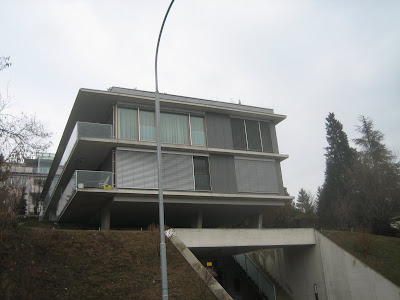


I have been writing this blog about infrastructure, networks, research, and education since I began the RENeW blog in January 2009. The blog was initiated for two reasons: 1. because I had been approached by a good number of people to start one and 2. I was finishing writing the Fragile Networks book with Patrick Qiang and blogging was a way in which to get news out and to also inform. Being an educator means keeping ties to students, even after they graduate, and to numerous colleagues and interested individuals, and this means of communication seems especially timely.
Throughout this semester, while teaching my undergrad transportation & logistics class, the students and I discussed associated events as they were occurring in the real world, from the closure of the San Francisco Bay bridge to the closure of the Lake Champlain bridge, along with the engineering, economic, and business consequences. We talked about passengers who were stranded on airport tarmacs for hours on planes before their release. We talked and learned about transportation modes and their variants around the globe. We came to truly appreciate the importance of transportation and logistics as networks that tie us all.
These and other stories continue as we near the New Year with President Obama passing a regulation that airlines on national flights cannot keep passengers on planes on the tarmac for longer than three hours without large financial penalties. Ah, the math modeling possibilities that now present themselves and colleagues in transportation and operations research have been recently quoted in the press on the associated scheduling and rescheduling issues and possible ramifications! However, all of my "stuck on the tarmac for 4 hours" stories have involved international flights so I guess I am not off the hook.
At the same time, we are reading about passengers being trapped in the Eurochunnel for hours with the Eurostar train shutting operation for days because of, supposedly, "unusually powdery snow entering the engines." In addition, due to a power failure yesterday, Amtrak had to shut train operation in parts of the Northeast yesterday for hours (during one of the busiest travel seasons of the year). Nevertheless, another theme for one of my blog posts was that of Boeing's production problems, which, for the time being, seem to have been now resolved, with the new Boeing 787 Dreamliner recently soaring over Washington state (2 years late but at least it can get up and fly now) . This is a fascinating case study on outsourcing and what happened.
The New York Times is now reporting in this NY Times Bridge Article that the Lake Champlain bridge that joins Vermont with New York State will not be repaired but rather will be imploded next Monday! The article demonstrates the huge impact on the communities from, first, the closure of this bridge last October and now with the heart-breaking news that this bridge will be destroyed. A lifeline for citizens is lost as well as an elegant (but one which needed lots of repairs) structure. I wrote about the closure of this bridge in a letter to the editor that was published in the Boston Globe last month.
Last March we traveled to Austria, since I was invited to give a seminar at the Vienna University of Business and Economics. We landed first in Innsbruck, where we spent a few days since we wanted to reconnect and see friends and townfolks that we had interacted with back in 2002 while I held a Distinguished Chaired Fulbright at the University of Innsbruck. During our 4 month stay in Innsbruck we lived in the house featured above in the first photo, which was owned by a professor at the university. The address was 94 Schneeburgasse. We had heard that the house had been sold and condos had replaced this magical villa with views of the Alps and the 1964 Olympics ski jump.
We wandered to see our former neighbors on Schneeburgasse last March and were welcomed with hugs. Above I also include the photo of the condo complex that replaced the villa (with several of the units not filled).
Let's take great care when we destroy the old. Beauty in design and function should be preserved also for its living history.
Now, we will have to just make do with some photos and incredible memories -- the same holds for those whose lives have been forever changed because of the removal of the Champlain bridge.


















